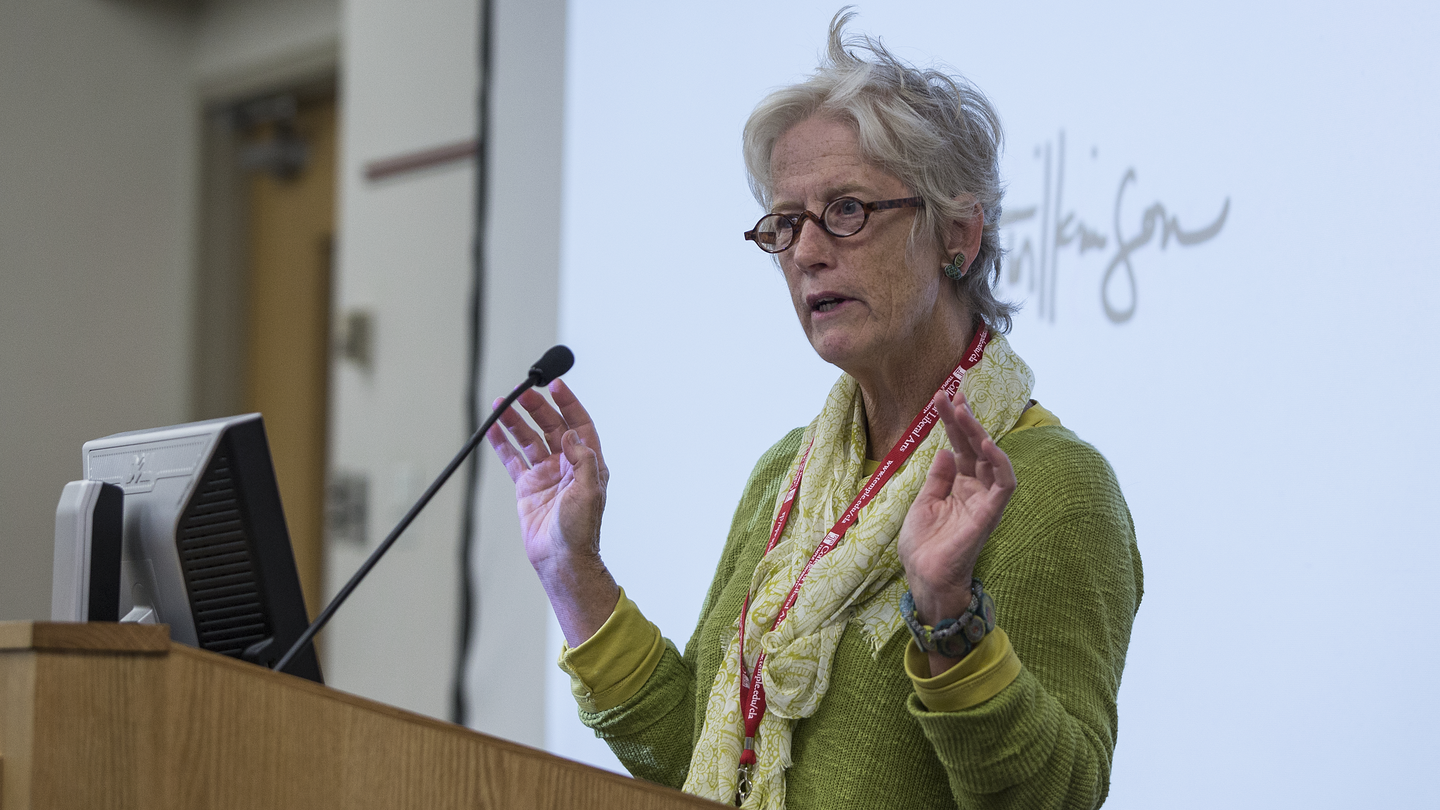
By Joseph Master
Times and tropes have certainly changed for editorial cartoonist Signe Wilkinson, a woman who has sketched herself a Pulitzer Prize-winning career on the pages of the Philadelphia Inquirer and the Philadelphia Daily News.
From Benjamin Franklin's severed serpent to Joseph Keppler's satire of 19th-century politics in Puck magazine to modern graphic depictions of race, gender, religion, and other divisive topics—graphic artists have always toed the line between empathy and insult, the First Amendment and censorship.
"The conundrum for cartoonists is that I have spent my career trying to defend the rights of women and minorities…but there is a tendency to second-guess and try to make sure you're not offending anyone," Wilkinson said Tuesday during a panel discussion devoted to free speech and censorship in comics, political cartoons and graphic illustration during the College of Liberal Arts Graphic Thinking Conference.
Given the ubiquity of social media and the uncertainty of international affairs, Wilkinson admitted that her cartoons now occupy the same space as tweets, which she likened to "small, sarcastic written cartoons."
It's important to remember that censorship doesn't just come from authority. It comes from social groups, and even, sometimes, from within.
For an artist who in 1989 was described by the Speaker of the Pennsylvania House of Representatives as "the Pennsylvania state vegetable substitute," figuring out what to commit to the page in the age of the Tweet can be like trying to sip water from a fire hydrant.
"By the time I get to the office to draw something, the president has tweeted three times, creating three international incidents," Wilkinson said. "What all artists have to do is keep their eyes open to how the world is changing."
Does Cartooning Help? Visualizing Suppression and Resistance
Moderated by Senior Associate Dean and Professor of Political Science Sandra Suárez, the panel included Beasley School of Law's Laura Little as well as comic artist and illustrator Jennifer Cruté. In a conversation that touched on the first amendment—including the social and legal ramifications of its historical suppression—one theme rang true: the First Amendment protects free speech. However, protection does not guard against derision, or, in the case of the 2015 Charlie Hebdo shooting, retaliatory attacks resulting in lives lost.
Speaking of the Hebdo murders, Little, who specializes in federal courts and constitutional law, cited the trope of the pencil as resistance and how it was shared around the globe, appearing on the covers of countless magazines and even paying homage to the iconic 1967 "flower power" photograph of a Vietnam War protestor placing a carnation in the barrel of a rifle.
"What we saw was a swarm of censorship through terror, fear and…homicide," Little said. "Censorship takes an idea out of the marketplace, which makes it not possible to respond to or to debate. It's important to remember that censorship doesn't just come from authority. It comes from social groups, and even, sometimes, from within."
Since the 2016 United States presidential election, political satire has certainly seen an uptick. From inspiring conversation to sparking debate, the panel agreed that there is a heightened interest in visual satire. However, the verdict is still out on art's capacity to move the national debate forward, rather than just adding more grist to an already bifurcated mill.
"I'm interested to see if it actually makes a difference for social change," Little said.
Wilkinson agreed.
"I'm concerned that we're splitting as a nation," she said. "We're not talking to each other. My concern is that cartooning doesn't help. If people are conservative, they agree with the conservative cartoons. And liberals agree with liberal cartoons."
